| August 22, 2007 |  |
our time will build eternity |
| Previous Issues | Aug 21 | Aug 20 | Aug 18 | Aug 17 | Aug 16 |
US shuttle makes textbook return landing Cape Canaveral, Florida (AFP) Aug 21, 2007
Cape Canaveral, Florida (AFP) Aug 21, 2007US shuttle Endeavour returned safely to Earth Tuesday, despite damage to its underside, after a 13-day mission in which the first teacher in space gave lessons to children back home. "You have given a new meaning to higher education," joked astronaut Chris Ferguson, as he welcomed back the five-man, two-woman crew including Endeavour astronaut Barbara Morgan, the first teacher in space. ... more Hurtling Toward Mars  Huntsville AL (MSFC) Aug 22, 2007
Huntsville AL (MSFC) Aug 22, 2007Earth and Mars are converging, and right now the distance between the two planets is shrinking at a rate of 22,000 mph--or about 25 miles per sentence. Ultimately, this will lead to a close approach in late December 2007 when Mars will outshine every star in the night sky. Of a similar encounter in the 19th century, astronomer Percival Lowell wrote the following: ... more Dust From Martian Sky Accumulates On Solar Panels  Pasadena CA (JPL) Aug 22, 2007
Pasadena CA (JPL) Aug 22, 2007Even though the Martian sky above Gusev Crater continued to clear, solar power levels on NASA's Spirit rover remained fairly constant as dust settling from the atmosphere accumulated on top of the solar panels. Activities remained restricted. Measurements of atmospheric opacity, known as Tau, dropped from 3.6 on Martian day, or sol, 1283 (Aug. 12, 2007) to 3.3 on sol 1286 (Aug. 16, 2007) ... more Gloomy Skies Show Signs of Clearing  Pasadena CA (JPL) Aug 17, 2007
Pasadena CA (JPL) Aug 17, 2007Spirit is healthy as the amount of dust hoisted into the atmosphere by recent wind storms has leveled off and solar energy levels have held steady at about 280 to 300 watt-hours of energy (100 watt-hours is the amount of energy needed to light a 100-watt bulb for one hour). Since the rover's 1,271st Martian day, or sol, of exploration (July 31, 2007), atmospheric opacity, a measurement known as ... more Student Joins AMASE Expedition In Svalbard  Svalbard, Denmark (SPX) Aug 20, 2007
Svalbard, Denmark (SPX) Aug 20, 2007For two weeks, an international crew of scientists and engineers are field-testing instruments for future Mars missions. Thea Falkenberg, winner of a student contest to join the AMASE expedition, reports back on her experiences through a daily blog. The Arctic Mars Analog Svalbard Expedition (AMASE) takes advantage of similarities between the conditions on Mars and those at Svalbard in order to ... more |
nuclearspace
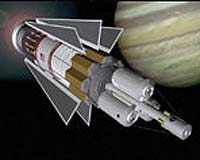 rocketscience 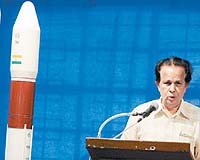 stellar-chemistry  |
 Paris, France (ESF) Aug 14, 2007
Paris, France (ESF) Aug 14, 2007Earth's surface is a very active place; its plates are forever jiggling around, rearranging themselves into new configurations. Continents collide and mountains arise, oceans slide beneath continents and volcanoes spew. As far as we know Earth's restless surface is unique to the planets in our solar system. So what is it that keeps Earth's plates oiled and on the move? Scientists think tha ... more Phoenix Adjusts Course Successfully For Journey To Mars  Pasadena (SPX) Aug 12, 2007
Pasadena (SPX) Aug 12, 2007NASA has commanded the Phoenix Mars Lander to make the first and largest of six course corrections planned during the spacecraft's flight from Earth to Mars. Phoenix left Earth Aug. 4, bound for a challenging touchdown on May 25, 2008, at a site farther north than any previous Mars landing. It will robotically dig to underground ice and run laboratory tests assessing whether the site could ever ... more What Makes Mars Magnetic  Paris, France (ESF) Aug 12, 2007
Paris, France (ESF) Aug 12, 2007Earth's surface is a very active place; its plates are forever jiggling around, rearranging themselves into new configurations. Continents collide and mountains arise, oceans slide beneath continents and volcanoes spew. As far as we know Earth's restless surface is unique to the planets in our solar system. So what is it that keeps Earth's plates oiled and on the move? Scientists think tha ... more Helping Phoenix Land  Tucson AZ (SPX) Aug 10, 2007
Tucson AZ (SPX) Aug 10, 2007The Phoenix Mars Lander launched on Saturday, August 4, beginning a journey to never-explored regions of the Red Planet to search for frozen water beneath the Martian surface. What it discovers will help scientists determine if Mars could support life. NASA's Jet Propulsion Laboratory (JPL) in Pasadena, Calif. and Langley Research Center in Hampton, Va. are working together with the University o ... more |
mars-mers
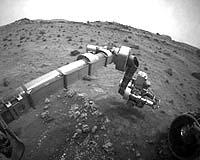 mars-phoenix  early-earth 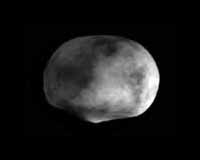 |
 Washington (AFP) Aug 04, 2007
Washington (AFP) Aug 04, 2007A US space probe embarked Saturday on a 10 month journey to Mars, where it will dig through Martian soil in a search for signs of life in a frigid region of the Red Planet. The Phoenix Mars Lander separated from a Delta II rocket after blasting off into the dark sky at 5:36 am (0936 GMT) from the Kennedy Space Center in Cape Canaveral, Florida. Powered by solar panels, Phoenix, whose launch was ... more Extreme Analytical Chemistry Will Help Unravel Mars Mysteries  Somerville MA (SPX) Aug 05, 2007
Somerville MA (SPX) Aug 05, 2007Sam Kounaves spends his time unraveling fundamental questions in planetary science by applying "extreme analytical chemistry" to the harshest environments imaginable: Places like Death Valley, Antarctica - and now Mars. The Tufts professor is a co-investigator on NASA's Phoenix Mars Lander Mission currently scheduled for launch on August 4. Kounaves will be leading the chemical analysis of Marti ... more NASA Spacecraft Heads For Polar Region Of Mars  Cape Canaveral FL (SPX) Aug 04, 2007
Cape Canaveral FL (SPX) Aug 04, 2007NASA's Phoenix Mars Mission blasted off Saturday, aiming for a May 25, 2008, arrival at the Red Planet and a close-up examination of the surface of the northern polar region. Perched atop a Delta II rocket, the spacecraft left Cape Canaveral Air Force Base at 5:26 a.m. Eastern Time into the predawn sky above Florida's Atlantic coast. "Today's launch is the first step in the long journey to ... more Next Departure For Mars Stands Ready To Fly  Cape Canaveral FL (SPX) Aug 02, 2007
Cape Canaveral FL (SPX) Aug 02, 2007A NASA robotic explorer equipped to dig up and analyze icy soil on Mars sits atop a 13-story tall stack of rocket engines prepared for liftoff before sunup on Saturday. A Delta II launch vehicle will carry the Phoenix Mars Lander into Earth orbit and, about 90 minutes later, give it the push needed to send it to Mars. A three-week period when planetary positions are favorable for this launch beg ... more
|
mars-phoenix
 mars-mers 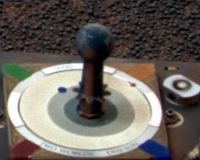 marsexpress 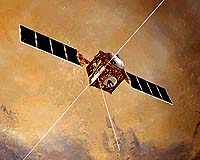 |
| Previous Issues | Aug 21 | Aug 20 | Aug 18 | Aug 17 | Aug 16 |
| The contents herein, unless otherwise known to be public domain, are Copyright 1995-2007 - SpaceDaily. AFP and UPI Wire Stories are copyright Agence France-Presse and United Press International. ESA Portal Reports are copyright European Space Agency. All NASA sourced material is public domain. Additional copyrights may apply in whole or part to other bona fide parties. Advertising does not imply endorsement, agreement or approval of any opinions, statements or information provided by SpaceDaily on any web page published or hosted by SpaceDaily. Privacy statement |